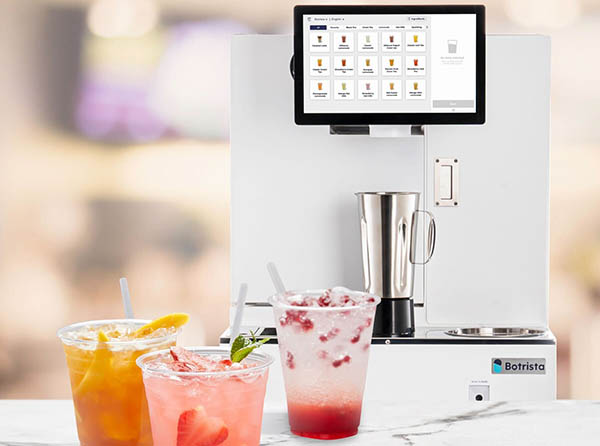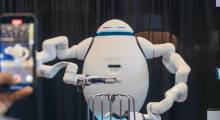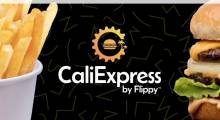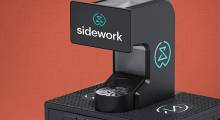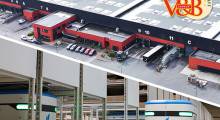The past few years have been even more challenging than usual for the restaurant industry. The COVID-19 pandemic shuttered restaurants, many of them forever. Online ordering, persistent staff shortages, and the need to maintain hygiene have led to an unprecedented interest in automation, noted Botrista Technology.
The turnover rate for family-style restaurants is 32%, and employee training costs an average of $3,179 per person, according to the company. As much as 81% of restaurant operators say they are short at least one position, Botrista said.
San Francisco-based Botrista provides beverage automation, which it says relieves human workers from tedious manual tasks. This allows them to be more productive, satisfied with their jobs, and better able to engage with customers, it said.
Sean Hsu, founder and CEO of Botrista, spoke with Robotics 24/7 about how his company approached restaurant robotics.
Getting into robotic restaurants
How did you come into food and beverage automation?
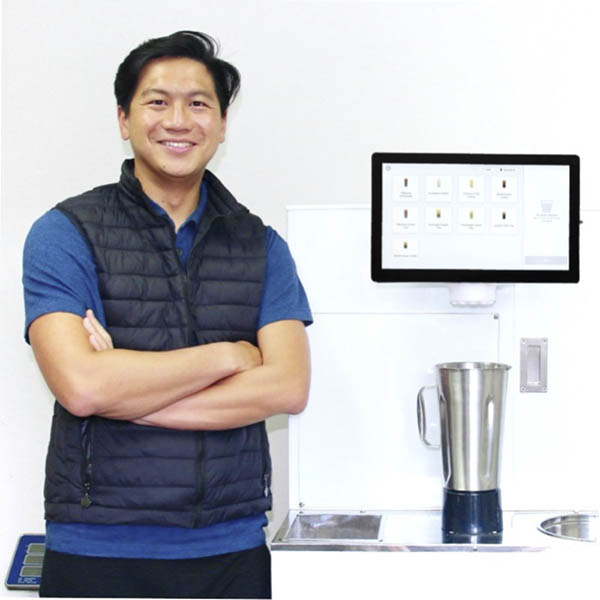
Hsu: I've been a serial entrepreneur since 2009, and I sold my first company in 2011. I was then at Tesla from 2013 to 2018.
As for food and beverage experience, I understand small and midsize businesses [SMBs], including the pain points of hiring, training, and retention.
How has Botrista's growth gone?
Hsu: We started the company four and a half years ago to develop automation to reduce the need for training and increase operational efficiency and personal productivity. A smaller headcount is easier to manage and scale for operators.
We're the first food robotics company to scale to more than 20 states. We're in almost 200 restaurants, and we'll get to 1,000 restaurants next year.
Botrista serves up mixed beverages
What is Botrista's value proposition?
Hsu: We have two kinds of customers—some get bars to increase productivity and reduce training waste. Automation could also help them expand their venues without expanding labor.
Our core business is to help restaurants without bars do the same things as with a bar. We work mostly with midsize or smaller chains that can move faster. We're not limited by restaurant type.
Botrista's technology can go any place where people need drinks—convenience stores, restaurants, and gyms. We have one DrinkBot in the San Francisco airport.
What specific tasks do your robots address?
Hsu: Our main approach is to help restaurants expand their menus without hiring another person. DrinkBot is designed to be easy to integrate with existing utility and infrastructure layouts.
We've been tuning our robot from a six-axis robot arm to two-axis to no-axis. We're now moving liquid instead of cups to make the machine small and easy to operate and maintain.
How does Botrista offer its DrinkBot systems?
Hsu: We're flexible; customers can buy the product upfront or through a lease or subscription model. Most are through robotics as a service [RaaS].
Botrista is in 26 states and 200 restaurants.
Robots aid recruitment and retention
You mentioned that Botrista saves restaurants from having to hire more staffers, but how does it help with recruitment and retention?
Hsu: When I was in industrial robotics at Tesla and commercial robotics firms, I learned that the user interface [UI] has to be the differentiator. Nobody reads a manual anymore—the the iPhone or Tesla doesn't even come with a manual anymore.
It was critical to have a similar UI for the operator and technicians. We designed our system to be easy to operate. If you go one level above, the robot can be monitored remotely. It provides telementry for management.
Hsu optimistic about the future
What are Botrista's plans? Are you looking for investors to grow?
Hsu: We're definitely looking for funding. We're around 70 people now and hope to grow to 100 next year.
We're a fairly flat organization, which can move and scale fast. We hope to double our headcount to 150 to 200 by 2024 and to go public in the next three years.
We mostly focus on fast-casual dining, where the target audience is looking for something healthier, and the restaurants want to differentiate their menus. By contrast, QSRs [quick-serve or fast-food restaurants] mostly do soda.
Where do you see this market going?
Hsu: It's still early in this game. The real demand will start in 2026. It's kind of painful now, but most operators own their own places. In the future, people will look for more reliable ways to run and scale their businesses.
Today, Mom-and-Pop restaurants are capable of doing their own work, but as they go into retirement, junior managers focus on the need for productivity and headcount. Mom-and-Pop stores are less of a percentage.
COVID led to short-term challenges, but in the longer term, the labor shortage is very obvious and serious. Nobody wants their kids to be doing physical work. More of our economy is focused on value-add intelligence than on physical labor.
Given the demand, can technology meet it in time as competition emerges?
Hsu: We know it's not an easy thing. I worked with Elon Musk on electric vehicles 10 years ago. Everybody knows such vehicles will be the future, but it will take time.
There's a lot of talent in Silicon Valley working hard to execute on very complicated tasks and make it happen. There's a huge opportunity in restaurant automation, but it's not like writing website code.
Robotics requires cross-functional coordination, and whichever hardware and software become big will need to work through the process of integration.
About the Author
Follow Robotics 24/7 on Linkedin
Article topics
Email Sign Up

